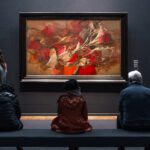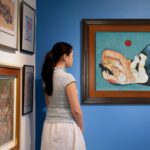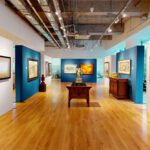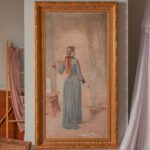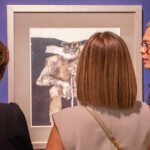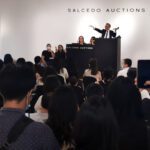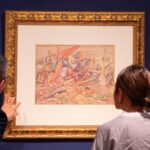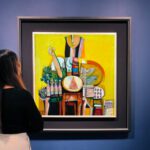
Legacy Redefined: Luis Romero Returns After 50 Years with ‘Split Landscapes’
- 26 February 2020
Mountain peak-like forms meld into ranges, each band appearing as monochrome horizons of alternating streaks. The lines convey both movement and restraint – a rumbling dance of elements so precisely choreographed and delivered, the rivulets of black and white crossing the canvass grids. There is a delicate balance here, a precarious symmetry achieved through the faultless compositional eye and masterful handling of media by the abstractionist Luis Romero.
Romero’s Split Landscapes are a rare rediscovery, hidden gems from a seminal period in Philippine modernism that testify to the refined ethos of the 1960s and its unceasing energy as it continues to hold an affective power that reverberates among contemporary viewers. Luis Romero was born in 1939 in Quezon City to a family of doctors. He showed a proclivity towards the arts at a young age, which he then brought with him to the University of Santo Tomas, where he studied architecture. There he met Roberto Chabet, a batch mate who was taking the same course, and who would become a life-long friend.
Both artists expressed an interest in the avant-garde at the onset, with Romero experimenting with cement and found objects as well as more traditional media. After graduating in 1961, the he and Chabet, together with two other young architects, opened their practice in a townhouse that formed part of the Romero family compount in Mandaluyong. Here the pair steadfastly held on to their fine arts work while developing their burgeoning professional practice – drafting projects in their shared office, while doing paintings, collages, and assemblages – Romero recalls a work he made together with Chabet inspired by Louise Nevelson, now lost, that functioned as a divider to break the monotony of space.
During that time, modernism had already taken a hold in Philippine art, the 60s arguably being its peak, with the likes of H.R Ocampo, Fernando Zobel, and Arturo Luz taking helm in defining a hybrid form of abstraction that shifted and expanded the boundaries of visual expression. It was Luz, in fact, who first exhibited the artist at his eponymous gallery in 1963. Romero recalls that it was from these exhibitions that Zobel acquired two of his works which would eventually be donated to the Ateneo de Manila University, and form part of the Ateneo Art Gallery’s seminal collection of modern Philippine art. A series of successful solo and group exhibitions followed which would intersect with a growing architectural practice that included being among the finalists for the design of the Ateneo’s Rizal Library in 1966.
Romero would move to New York to study at the Art Students League in 1968. Here, professors took notice of his unique linear abstractions. Imbued by the bustle of the New York art scene, Romero found inspiration from the likes of the then vanguard artists Robert Rauschenberg, Robert Motherwell, and Jasper Johns, spending weekends in galleries and museum shows. His works from that time reflected the aesthetic of the city, deconstructed minimalist abstracts, whose aesthetic transcended their medium, using readily available materials and repurposing them into sophisticated and complex works. Chabet and another close friend Jose Joya would later join Romero in New York – both on grants from the Rockefeller Foundation, which created more opportunities for close collaboration. Prior to departing for Manila to assume the position of museum director of the newly-established Cultural Center of the Philippines (CCP), Chabet invited Romero to join him as his deputy, but later advised his friend to remain in New York and pursue his architectural practice in light of the worsening political situation. Romero would continue to mount exhibitions in New York and in Germany in the 1970s, with one of his works being acquired for the renowned Johnson & Johnson art collection.
Romero would return to his homeland frequently, reconnecting with Chabet, Joya, and local artisic and social circles, but this marks the very first exhibition of the artist in the Philippines in over forty years. With this landmark return exhibition, Luis Romero reconnects with his artistic roots and builds a bridge between the geometric apogees of the past – of which he played an indelible part – with current abstract practice. Luis Romero’s work is a testament to the timelessness of modernity. Split Landscapes is nostalgic as it is new: a tour de force connecting fragmented periods as seamlessly as their interconnected canvasses form a space for dialogue.




